-
 Bitcoin
Bitcoin $109,459.7682
2.44% -
 Ethereum
Ethereum $2,598.6052
6.29% -
 Tether USDt
Tether USDt $1.0003
0.00% -
 XRP
XRP $2.2734
3.95% -
 BNB
BNB $661.4886
1.58% -
 Solana
Solana $155.4825
4.35% -
 USDC
USDC $0.9999
-0.02% -
 TRON
TRON $0.2838
1.04% -
 Dogecoin
Dogecoin $0.1740
8.25% -
 Cardano
Cardano $0.6047
9.04% -
 Hyperliquid
Hyperliquid $40.2302
6.50% -
 Sui
Sui $2.9863
10.05% -
 Bitcoin Cash
Bitcoin Cash $509.5786
0.60% -
 Chainlink
Chainlink $13.8156
6.03% -
 UNUS SED LEO
UNUS SED LEO $9.0142
0.69% -
 Avalanche
Avalanche $19.0337
8.68% -
 Stellar
Stellar $0.2438
5.17% -
 Toncoin
Toncoin $2.9012
3.59% -
 Shiba Inu
Shiba Inu $0.0...01210
6.20% -
 Litecoin
Litecoin $90.0882
7.05% -
 Hedera
Hedera $0.1597
8.53% -
 Monero
Monero $326.3340
2.88% -
 Polkadot
Polkadot $3.6365
9.32% -
 Bitget Token
Bitget Token $4.6162
2.72% -
 Dai
Dai $1.0001
0.00% -
 Ethena USDe
Ethena USDe $1.0002
-0.01% -
 Uniswap
Uniswap $7.6403
10.47% -
 Pepe
Pepe $0.0...01060
12.03% -
 Aave
Aave $281.3664
7.56% -
 Pi
Pi $0.4992
1.76%
What is staking-as-a-service?
Staking-as-a-Service allows users to earn rewards on Proof-of-Stake blockchains without managing technical infrastructure.
Jul 03, 2025 at 10:43 am
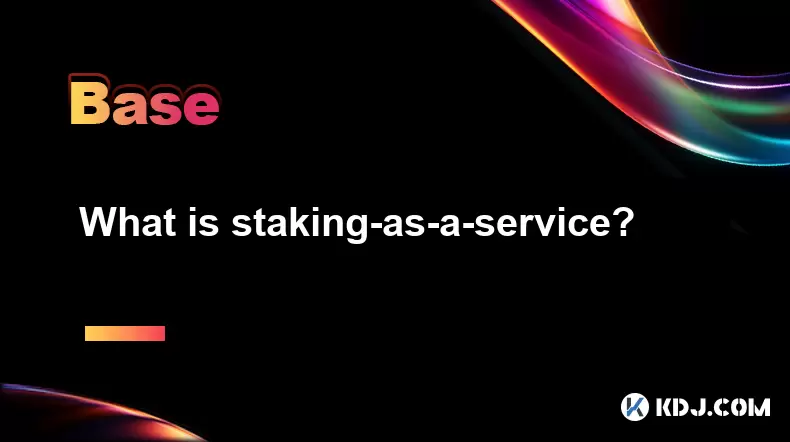
Understanding Staking-as-a-Service
Staking-as-a-Service (STaaS) is a blockchain-based service model that allows individuals and institutions to participate in Proof-of-Stake (PoS) networks without the need for technical expertise or infrastructure. Instead of running their own validator nodes, users can delegate their cryptocurrency assets to a third-party provider who manages the staking process on their behalf.
This service has gained popularity as more blockchains shift from energy-intensive Proof-of-Work (PoW) consensus mechanisms to PoS, which requires token holders to lock up funds to support network operations. By offering secure, scalable, and user-friendly solutions, STaaS providers help users earn rewards while reducing the complexities associated with staking.
Staking-as-a-Service eliminates barriers like hardware setup, node maintenance, and constant monitoring.
How Does Staking-as-a-Service Work?
The core mechanism behind Staking-as-a-Service involves a service provider handling all aspects of staking for clients. Users simply deposit their tokens into an account managed by the service provider, who then stakes those tokens on their behalf across various PoS blockchains.
- The client transfers their tokens to the provider’s wallet or platform
- The provider delegates these tokens to active validators on the target blockchain
- Rewards are earned based on the total amount staked and the network's reward rate
- Earnings are periodically distributed back to the client after deducting service fees
Providers often use cold storage wallets and redundant server setups to ensure security and uptime. Some platforms also offer real-time dashboards where users can monitor their staked assets and accrued rewards.
Users retain ownership of their assets but rely on the service provider to manage the technical side of staking.
Benefits of Using Staking-as-a-Service Providers
One of the major advantages of using Staking-as-a-Service is accessibility. Not everyone has the time or knowledge to run a validator node, especially when dealing with multiple chains. STaaS simplifies this process significantly.
Another key benefit is security. Reputable providers implement robust measures such as multi-signature wallets, hardware security modules (HSMs), and distributed node infrastructures to protect user assets.
Additionally, STaaS platforms often support cross-chain staking, allowing users to stake different cryptocurrencies across various networks through a single interface. This eliminates the need to interact directly with each blockchain’s native staking tools.
Using a trusted STaaS provider can reduce operational overhead while maintaining consistent staking rewards.
Choosing the Right Staking-as-a-Service Provider
When selecting a Staking-as-a-Service provider, it’s essential to consider several factors to ensure both safety and profitability.
First, evaluate the provider’s track record and reputation within the crypto community. Look for reviews, audits, and whether they have been involved in any past incidents such as slashing events or downtime.
Second, examine the fee structure. While most providers charge a percentage of the staking rewards, some may impose additional fees for withdrawals or early unstaking.
Third, check if the provider supports non-custodial staking options, where users maintain control of their private keys. This adds an extra layer of security compared to fully custodial services.
Finally, ensure that the platform offers transparent reporting and real-time tracking of staked assets and earned rewards.
A reliable STaaS provider should offer transparency, strong security practices, and support for multiple blockchain networks.
Staking-as-a-Service vs. Self-Hosting a Validator Node
There are distinct differences between using a Staking-as-a-Service provider and setting up your own validator node.
Running a validator node requires significant technical knowledge, including understanding how to configure servers, maintain uptime, and secure private keys. It also demands continuous monitoring and troubleshooting to avoid penalties due to offline periods or misconfigurations.
In contrast, Staking-as-a-Service abstracts away all these complexities. The service handles everything from node operation to reward distribution, allowing users to focus solely on earning passive income.
However, self-hosting offers full control over the staking process and potentially higher returns since there are no intermediary fees involved. For those with the expertise and resources, running a validator can be more profitable long-term.
While self-staking provides greater autonomy, Staking-as-a-Service delivers convenience and accessibility to a broader audience.
Frequently Asked Questions
Q: Can I unstake my assets at any time with Staking-as-a-Service?
Most providers allow users to unstake their assets, but there may be unbonding periods set by the underlying blockchain. During this time, assets are not liquid and cannot be transferred or traded.
Q: Are there risks involved in using Staking-as-a-Service?
Yes, risks include potential slashing penalties if the provider misbehaves or gets compromised. Additionally, using a custodial provider means trusting them with asset management, which introduces counterparty risk.
Q: How are staking rewards calculated by STaaS providers?
Rewards depend on the network inflation rate, the total amount of assets being staked, and the provider’s fee structure. Most platforms display estimated annual percentage yields (APY) to give users a clear idea of potential earnings.
Q: Is Staking-as-a-Service legal in all jurisdictions?
Regulatory treatment varies by country. Some regions may classify staking rewards as taxable income or subject them to specific licensing requirements. Always consult local regulations before participating.
Disclaimer:info@kdj.com
The information provided is not trading advice. kdj.com does not assume any responsibility for any investments made based on the information provided in this article. Cryptocurrencies are highly volatile and it is highly recommended that you invest with caution after thorough research!
If you believe that the content used on this website infringes your copyright, please contact us immediately (info@kdj.com) and we will delete it promptly.
- Crypto Summer Buys: Is Shiba Inu Out, and What's In?
- 2025-07-03 18:30:12
- Bitcoin, Solaris Presale, and Coin Watch: Catching the Next Wave
- 2025-07-03 19:10:11
- BONK ETF Buzz: Catalyst for a Meme Coin Moonshot?
- 2025-07-03 19:50:12
- Sui Coin, Bitcoin Solaris, and the Presale Opportunity: Catching the Next Wave
- 2025-07-03 19:50:12
- Sui Coin, Bitcoin Solaris, and Presale Opportunities: What's the Buzz?
- 2025-07-03 19:55:14
- MEXC's Bitcoin Reserves: A Fortress of Asset Coverage
- 2025-07-03 19:55:14
Related knowledge

What is open interest in derivatives?
Jul 03,2025 at 02:49pm
Understanding Open Interest in DerivativesOpen interest is a critical metric used in the cryptocurrency derivatives market, particularly when analyzing futures and options contracts. It represents the total number of outstanding contracts that have not been settled or closed by either party involved. Unlike trading volume, which counts all trades made i...
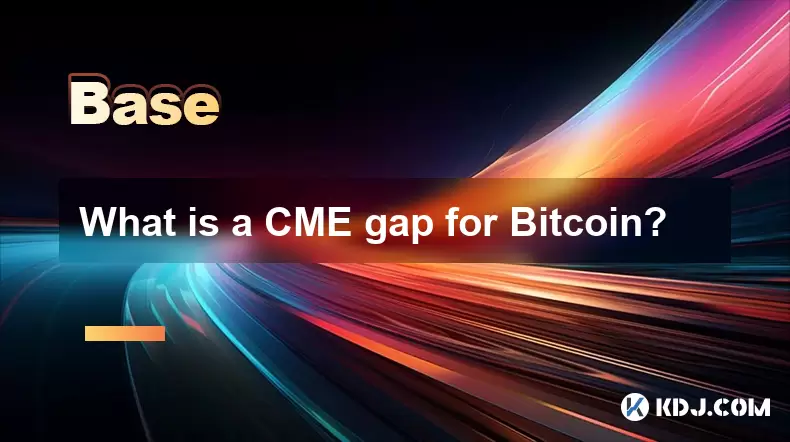
What is a CME gap for Bitcoin?
Jul 03,2025 at 05:49pm
Understanding the Concept of a CME GapA CME gap refers to a discrepancy in price between the closing price of Bitcoin on the Chicago Mercantile Exchange (CME) and its opening price when trading resumes. This phenomenon occurs because the CME operates during specific hours, typically aligned with traditional market hours, while cryptocurrency markets ope...
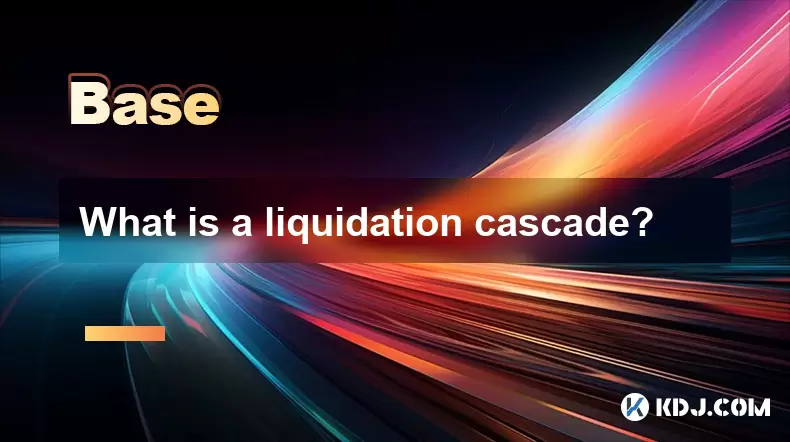
What is a liquidation cascade?
Jul 03,2025 at 07:15am
Understanding the Concept of LiquidationIn the realm of cryptocurrency trading, liquidation refers to the process by which a trader's position is automatically closed due to insufficient funds to maintain the leveraged trade. This typically occurs when the market moves against the trader's position and their account equity falls below the required maint...
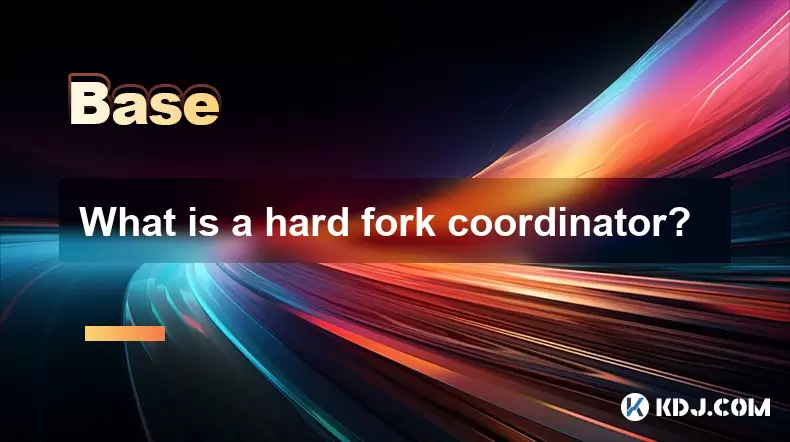
What is a hard fork coordinator?
Jul 03,2025 at 12:42pm
Understanding the Role of a Hard Fork CoordinatorIn the world of blockchain and cryptocurrencies, a hard fork coordinator plays a critical role during major network upgrades. A hard fork is a significant change to a blockchain’s protocol that makes previously invalid blocks or transactions valid (or vice versa). This type of upgrade requires all nodes o...
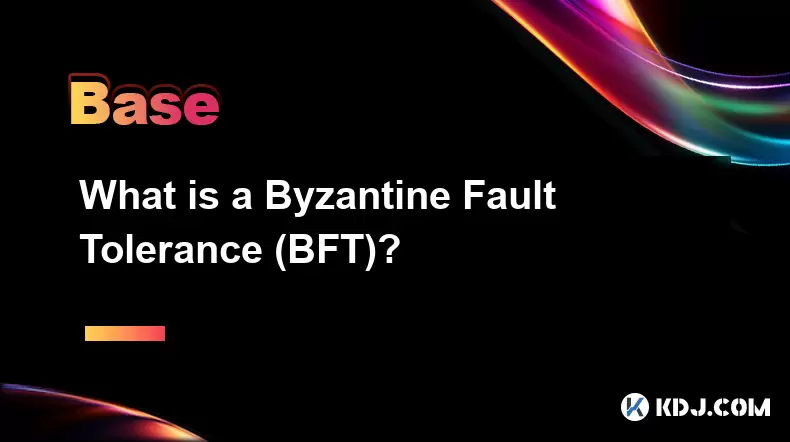
What is a Byzantine Fault Tolerance (BFT)?
Jul 03,2025 at 11:49am
Understanding the Concept of Byzantine Fault ToleranceByzantine Fault Tolerance (BFT) is a critical concept in distributed systems, particularly within the realm of blockchain technology and cryptocurrencies. It refers to the ability of a system to continue functioning correctly even when some components fail or behave maliciously. The term originates f...
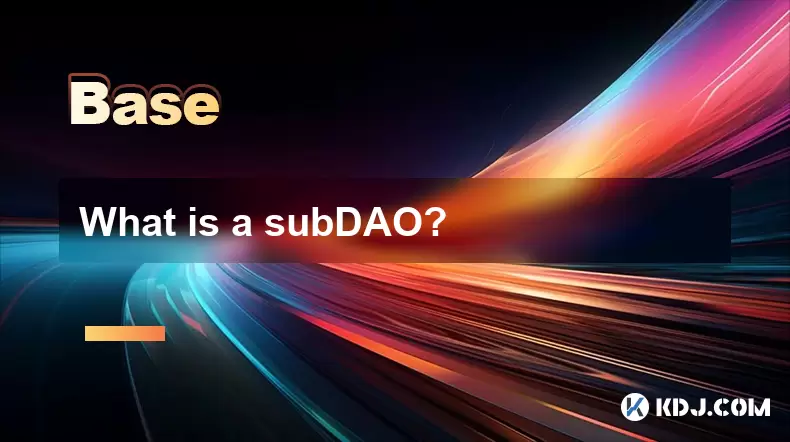
What is a subDAO?
Jul 03,2025 at 09:36am
Understanding the Concept of SubDAOA SubDAO, short for Sub-Decentralized Autonomous Organization, is a specialized entity that operates under the umbrella of a larger DAO (Decentralized Autonomous Organization). It functions with its own set of rules, governance mechanisms, and tokenomics while remaining aligned with the overarching goals of the parent ...

What is open interest in derivatives?
Jul 03,2025 at 02:49pm
Understanding Open Interest in DerivativesOpen interest is a critical metric used in the cryptocurrency derivatives market, particularly when analyzing futures and options contracts. It represents the total number of outstanding contracts that have not been settled or closed by either party involved. Unlike trading volume, which counts all trades made i...

What is a CME gap for Bitcoin?
Jul 03,2025 at 05:49pm
Understanding the Concept of a CME GapA CME gap refers to a discrepancy in price between the closing price of Bitcoin on the Chicago Mercantile Exchange (CME) and its opening price when trading resumes. This phenomenon occurs because the CME operates during specific hours, typically aligned with traditional market hours, while cryptocurrency markets ope...

What is a liquidation cascade?
Jul 03,2025 at 07:15am
Understanding the Concept of LiquidationIn the realm of cryptocurrency trading, liquidation refers to the process by which a trader's position is automatically closed due to insufficient funds to maintain the leveraged trade. This typically occurs when the market moves against the trader's position and their account equity falls below the required maint...

What is a hard fork coordinator?
Jul 03,2025 at 12:42pm
Understanding the Role of a Hard Fork CoordinatorIn the world of blockchain and cryptocurrencies, a hard fork coordinator plays a critical role during major network upgrades. A hard fork is a significant change to a blockchain’s protocol that makes previously invalid blocks or transactions valid (or vice versa). This type of upgrade requires all nodes o...

What is a Byzantine Fault Tolerance (BFT)?
Jul 03,2025 at 11:49am
Understanding the Concept of Byzantine Fault ToleranceByzantine Fault Tolerance (BFT) is a critical concept in distributed systems, particularly within the realm of blockchain technology and cryptocurrencies. It refers to the ability of a system to continue functioning correctly even when some components fail or behave maliciously. The term originates f...

What is a subDAO?
Jul 03,2025 at 09:36am
Understanding the Concept of SubDAOA SubDAO, short for Sub-Decentralized Autonomous Organization, is a specialized entity that operates under the umbrella of a larger DAO (Decentralized Autonomous Organization). It functions with its own set of rules, governance mechanisms, and tokenomics while remaining aligned with the overarching goals of the parent ...
See all articles

























































































